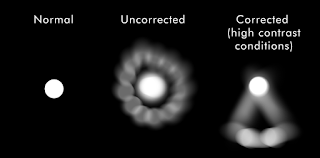I am taking a break from the usual topics that I write
about to spread a little awareness about keratoconus.
What is Keratoconus?
Today, November 10th, is world keratoconus day,
the word entered my life unexpectedly several years ago after visiting the optometrist
after noticing a rapid decrease in vision in my left eye. A week later an ophthalmologist
diagnosed the problem and warned me of the long and expensive journey that lay
ahead.
Keratoconus (KC) is a rare and degenerative eye disease that occurs when your usually dome –shaped cornea becomes cone-shaped causing blurry and distorted vision which when left untreated or uncorrected can lead to been declared legally blind. Because our pupils open wider at night, the pupil is exposed to more of the irregular corneal surface in KC sufferers making night vision and light sensitivity far more pronounced. There is no concrete evidence but it is thought that the cause of KC is oftentimes genetic or the result of rubbing one’s eyes.
The world with keratoconus
Treatment for keratoconus
There is no cure for keratoconus but the progression can be
slowed or stopped with a procedure called crosslinking which is performed to
strengthen the cornea, this is commonly known as epi-on (noninvasive procedure)
or epi-off (which involves surgical removal of the corneal epithelium during the procedure). A corneal
ring implant known as Intacs is another option available which helps to flatten
the peak of the corneal cone. Then as a last resort, a corneal transplant can
be performed as well which is something around 20% of people with KC will
require.
 |
| Crosslinking procedure |
Glasses and soft lenses do not help to correct vision in a
keratoconic eye so once an eye is relatively stable, usually a few months after
having crosslinking done, vision is corrected by using either RGP (rigid gas
permeable) lenses or scleral lenses. Finding the right lens is a long process
of trial and error and can take years to get right but for me personally, In my
left eye which is my KC eye, I went from 20/317 vision to 20/65 vision once I
received my scleral lens (20/200 is legally blind) so the struggle is well worth it in the end.
 |
| My personal KC kit and part of the everyday morning routine |
Support
The chances are if you have KC that no one around you will
understand it or even have heard about it. It can be a daunting and lonely road
so it is best to join a keratoconus group on Facebook or a similar site where
you can ask questions or just share your struggles, invite those closest to you
to join as well so that they can understand what you are going through. In the
end though, KC is not a death sentence, the vast majority of people will still
be able to drive and work a regular job and in time, you do adapt to the
changes. I still get to write which is something that I love. All of the procedures and lenses mentioned above are relatively new
and although advancement is slow due to the rarity of the condition, it is
there and the options you have available to you today simply did not exist 1 or
2 generations ago. It is a good time to be alive.







According to Stanford Medical, It's indeed the SINGLE reason this country's women live 10 years more and weigh an average of 42 lbs less than us.
ReplyDelete(Just so you know, it has NOTHING to do with genetics or some secret-exercise and really, EVERYTHING around "how" they eat.)
BTW, What I said is "HOW", and not "what"...
CLICK on this link to uncover if this brief test can help you decipher your true weight loss potential